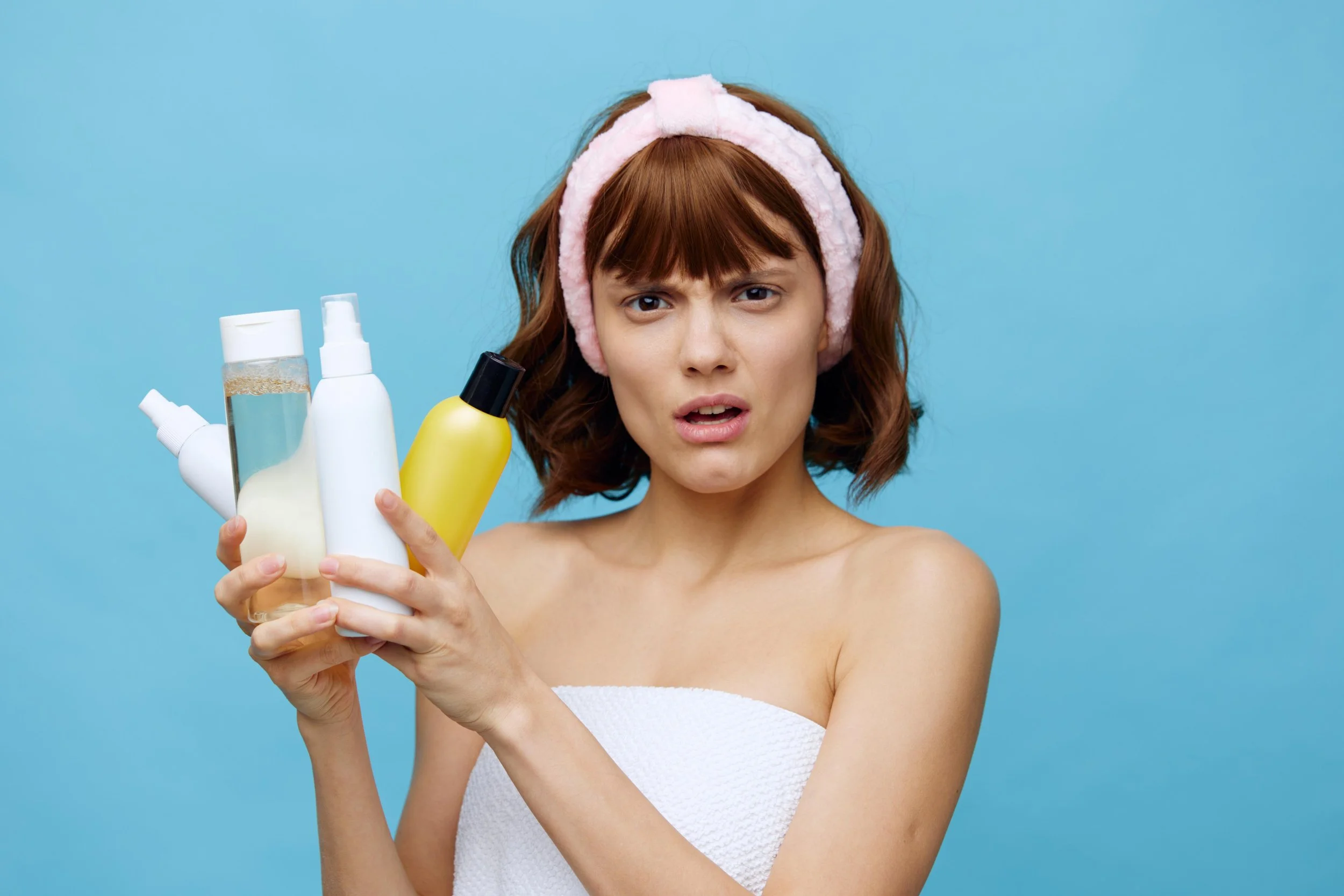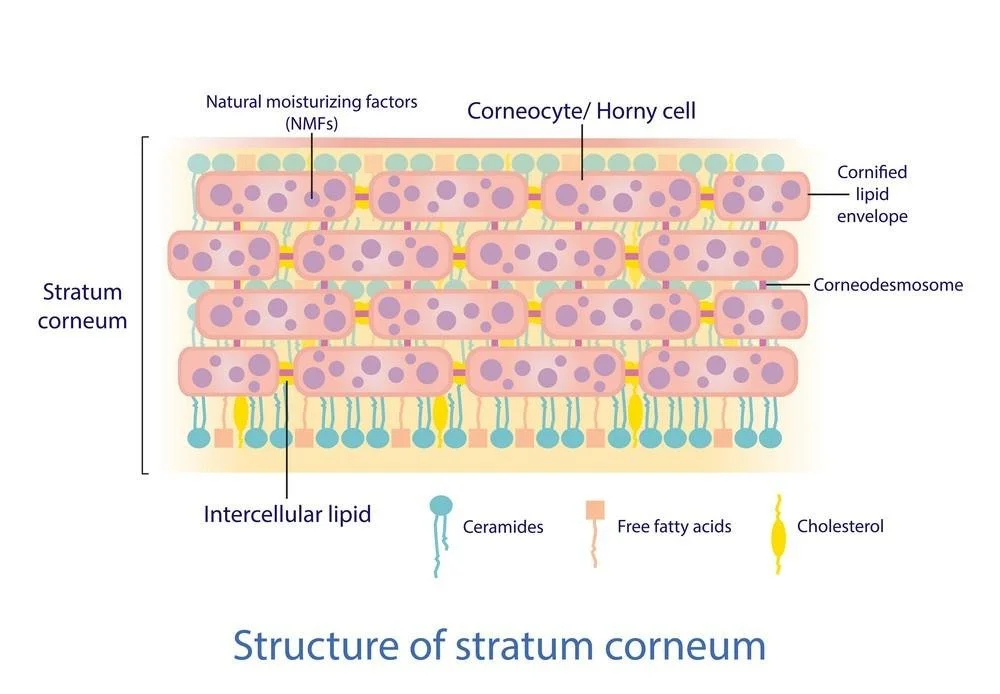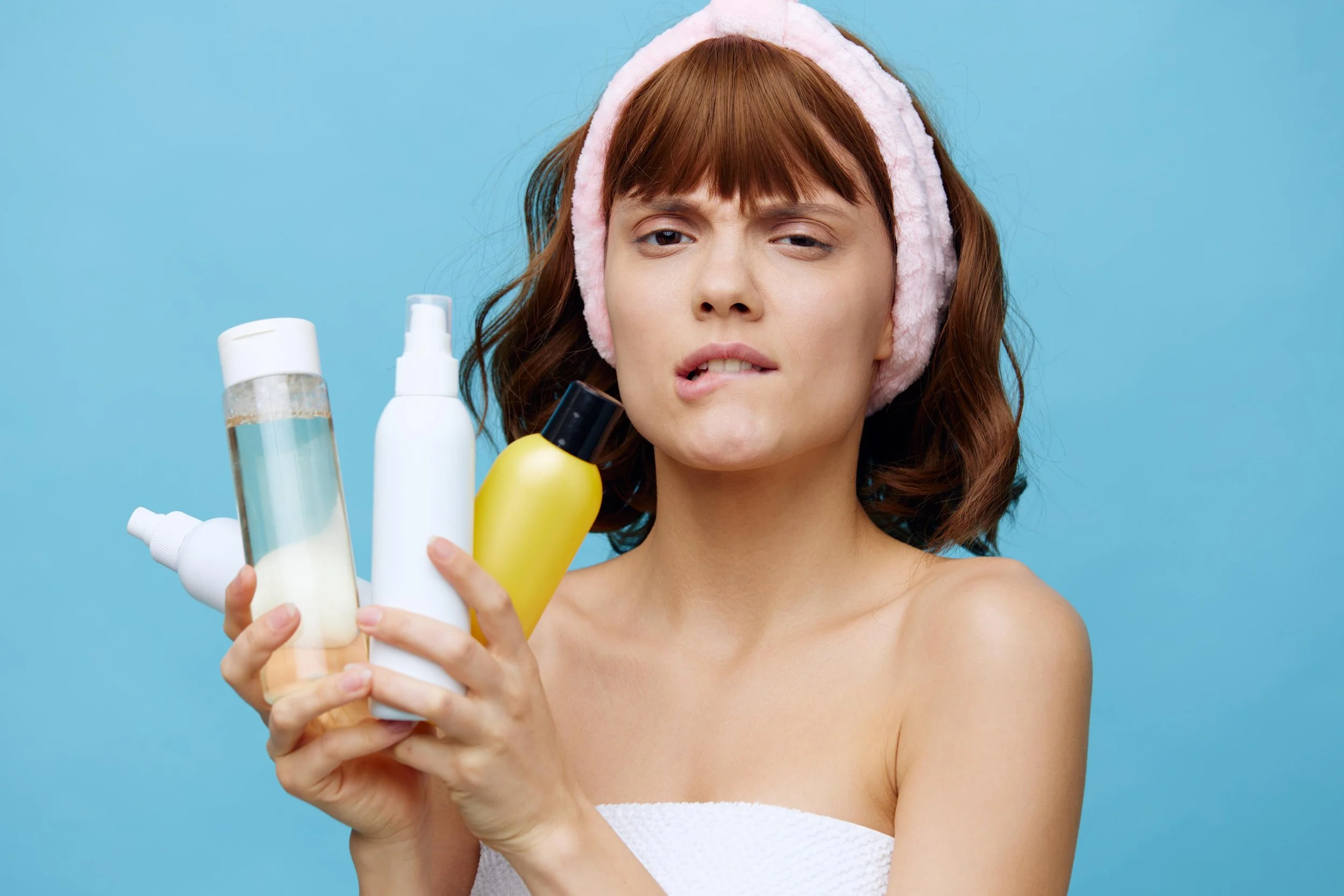Hydration Layering 101: The Right Order to Apply Serums, Oils, and Moisturizer
This post contains affiliate links. As an Amazon Associate, I earn from qualifying purchases—at no extra cost to you. I only recommend products I truly believe in.
🧴 Wait, You’re Still Guessing Your Skincare Order?
Let’s be real—layering your skincare shouldn’t feel like decoding ancient scrolls. And yet, here we are, staring at a lineup of serums, oils, and moisturizers like it’s a pop quiz we forgot to study for. If you’ve ever rubbed in a $90 serum only to follow it with a $12 face oil and wondered why your skin still feels thirsty... you’re not alone, and you’re definitely not broken.
The truth is, order matters—a lot. Skincare isn’t just about what you use, but how you use it. And when it comes to hydration (a.k.a. the difference between glazed donut and flaky croissant skin), nailing the right layering sequence is everything.
In this post, we’re going full lab coat meets group chat. I’ll walk you through the science of how your skin actually drinks in those products, debunk a few myths (sorry, your face oil isn’t a moisturizer), and give you a glow-worthy routine that works with your skin—not against it. Ready to layer like a pro? Let’s do this.
The Science of Skin Hydration (Explained Like You’re 5—but With Citations)
Before we get wild with layering serums and oils like a skincare sandwich, let’s talk about what skin hydration actually is.
Spoiler: it’s not about chugging water and hoping for the best.
💧 Meet Your Skin Barrier
Your skin’s top layer—called the stratum corneum—acts like a brick wall.
The bricks = skin cells
The mortar = lipids (ceramides, cholesterol, fatty acids)
When this barrier is damaged (from over-exfoliating, sun damage, or stress), it leaks water. That’s called transepidermal water loss (TEWL)—and it’s why your face feels like a sad sponge, no matter how expensive your serum is.
🧪 The Fix? Hydration Layering
To beat TEWL and keep skin juicy, you need a triple-layered strategy:
Add water – use humectants like hyaluronic acid
Trap water – use emollients like squalane or panthenol
Seal it in – with occlusives like dimethicone or a rich cream
Do this out of order? Your skin stays thirsty.
🚫 And No, Skin Doesn’t “Drink” Product
Ingredient size, delivery system, and placement in your routine all matter. That’s why layering isn’t just skincare—it’s chemistry. (Sexy, right?)
TL;DR: When you layer the right ingredients in the right order, you’re not just moisturizing—you’re locking in hydration, protecting your barrier, and building that glowy skin moment. Like a skincare scientist. In cute pajamas.
Step-by-Step: The Ultimate Hydration Layering Routine
Okay, science class is over—let’s put all that glowing knowledge into action. Here's how to actually layer your skincare so it hydrates like a dream, plays well together, and doesn’t leave your face feeling like a sticky mess.
🧼 Step 1: Cleanser (Start Fresh, But Gently)
Cleansing is your skin’s reset button. You want something that removes grime and SPF without wrecking your moisture barrier.
- Tatcha The Rice Wash
👉 Check price on Amazon - Youth to the People Superfood Cleanser
👉 Check price on Amazon - CeraVe Hydrating Cleanser
👉 Check price on Amazon
💦 Step 2: Toner or Essence (Optional, But Hydrating AF)
If you’re extra (hi, same), a hydrating toner or essence preps your skin to absorb everything else better.
- SK-II Facial Treatment Essence
👉 Check price on Amazon - Laneige Cream Skin Toner & Moisturizer
👉 Check price on Amazon - Haruharu Wonder Black Rice Hyaluronic Toner
👉 Check price on Amazon
💧 Step 3: Humectant Serum (Add the Water)
Now we layer the hydration magnet. Think: hyaluronic acid, polyglutamic acid, or beta-glucan.
- Dr. Barbara Sturm Hyaluronic Serum
👉 Check price on Amazon - Glow Recipe Plum Plump Hyaluronic Serum
👉 Check price on Amazon - The Ordinary Hyaluronic Acid 2% + B5
👉 Check price on Amazon
💡 Step 4: Barrier-Boosting Serum (Lock It In + Strengthen)
This is your “support the skin” moment. Use niacinamide, peptides, or ceramide-boosting blends to keep your barrier strong and inflammation low.
- Allies of Skin Multi-Nutrient & Dioic Serum
👉 Check price on Amazon - Paula’s Choice 10% Niacinamide Booster
👉 Check price on Amazon - Good Molecules Niacinamide Serum
👉 Check price on Amazon
✨ Step 5: Face Oil (Optional — Know Your Skin Type)
Dry or mature skin? This is your glow step. Oils help trap moisture and deliver nourishing lipids. But oily or acne-prone skin might want to skip or go light.
- Sunday Riley Juno Antioxidant + Superfood Face Oil
👉 Check price on Amazon - Biossance Squalane + Vitamin C Rose Oil
👉 Check price on Amazon - The Ordinary 100% Organic Rosehip Oil
👉 Check price on Amazon
🧴 Step 6: Moisturizer (Seal the Deal)
This step locks everything in and creates that final layer of comfort. Choose based on your skin type: gel creams for oily types, rich creams for dry babes.
- Augustinus Bader The Cream / The Rich Cream
👉 Check price on Amazon - Dr. Jart+ Ceramidin Cream
👉 Check price on Amazon - Neutrogena Hydro Boost Water Gel
👉 Check price on Amazon
☀️ Step 7: SPF (AM Only — Non-Negotiable)
You can layer like a legend, but if you skip SPF, you’re undoing all that glowy progress. UV rays are hydration’s worst enemy.
- Shiseido Ultimate Sun Protector SPF 50+
👉 Check price on Amazon - EltaMD UV Clear Broad-Spectrum SPF 46
👉 Check price on Amazon - La Roche-Posay Anthelios Melt-In Milk SPF 60
👉 Check price on Amazon
Layering for Skin Types: Dry, Oily, Sensitive, Combo
Let’s be real—no two faces layer the same. While the hydration routine we just covered is the gold standard, your skin type might want a few tweaks to keep things balanced and glow-worthy.
🌵 Dry Skin: Give Me All the Moisture
Dry skin types need hydration from every angle. Think of your skin as a sponge that needs water (humectants) and a blanket (occlusives).
Use a hydrating toner and double up on serums (HA + niacinamide is a dream team).
Lock it in with a richer cream and consider adding a nourishing oil like rosehip or marula.
Avoid alcohol-heavy toners—they’ll ghost your glow.
💧 Oily Skin: Light Layers, Heavy Results
Oily skin still needs hydration (yes, really). Stripping it will just make it oilier.
Go for a hydrating serum and lightweight gel moisturizer.
Face oil? Optional. If you do, stick to non-comedogenic oils like squalane.
Use niacinamide to help regulate sebum and minimize that mid-day shine.
😬 Sensitive Skin: Less Is More
You want barrier support without irritation.
Choose fragrance-free, alcohol-free products with soothing ingredients like panthenol and ceramides.
Patch test actives like retinol and acids, and ease in slowly.
Stick with a gentle HA serum + ceramide moisturizer combo to start.
🤹♀️ Combo Skin: T-Zone Drama, Cheek Drought
You’ve got both oil slicks and flaky zones—fun!
Spot treat like a pro: use a mattifying serum or niacinamide on oily areas, and a rich moisturizer or oil on dry spots.
Layer lighter textures first, then build based on what each zone needs.
Bottom line: Your skin type sets the vibe, but hydration layering is for everyone. Customize your routine like you’d a coffee order—light foam, extra cream, hold the breakout.
Common Mistakes (and How to Un-Mess Them)
Look, we’ve all been there—layering like we’re frosting a cake and wondering why our skin feels like tacky wallpaper paste. Let’s fix that.
❌ Mistake 1: Oils Before Serums
Face oils are occlusive. If you apply them first, you're basically telling your other products, “Sorry, we’re full.” Water-based serums can’t penetrate through a layer of oil, so always go lightest to heaviest.
❌ Mistake 2: Skipping Moisturizer Because You’re “Oily”
Big mistake. Huge. Even oily skin needs moisture—otherwise, your sebaceous glands freak out and pump more oil. A lightweight, oil-free moisturizer keeps your skin hydrated and balanced.
❌ Mistake 3: Over-Layering Actives
If your “hydration routine” includes five serums, two acids, and a retinoid—congrats, you’re overwhelming your barrier. Stick to one or two active ingredients at a time. Layering should build comfort and results, not confusion and irritation.
❌ Mistake 4: Not Letting Layers Set
Slapping everything on in 30 seconds flat? That’s a great way to get pilling. Wait 30–60 seconds between layers, especially between watery serums and creams.
Pro tip: When in doubt, simplify. The goal isn’t more product—it’s better absorption. Hydration should feel like a glow-up, not a guessing game.
Final Takeaway: Glowy Skin Is a Science—But You Don’t Need a PhD (I’ve Got You)
Hydration layering doesn’t have to feel like a puzzle written in Latin. When you understand what your skin actually needs—and apply things in the right order—you unlock smoother texture, better absorption, and that juicy, glazed-donut glow (minus the stickiness).
💧 The Formula to Remember:
Add water (humectants – draw moisture in)
Reinforce the barrier (emollients – smooth and strengthen the skin’s surface)
Seal it in (occlusives – lock in all that goodness)
Layer light to heavy. Let each step breathe. And tailor it to your skin like you’re customizing a coffee order—extra HA, hold the irritation.
Whether you’re dry and flaky, oily and over it, or somewhere in between, the right routine will help your skin show up the way you want it to.
Now go layer like a legend. Your skin barrier—and your future self—will thank you.
Want to Dig Deeper?
If your skin is sensitive right now, repair work comes first, and this barrier guide shows how to layer without irritation.
When glow is the goal as well as hydration, you can add one gentle brightener back in, and this article explains which ones play nicely.
For a fast moisture reset before makeup or bedtime, pick a hydrating mask from our tested favorites.
📚 References
Qassem M, Kyriacou P. Modern techniques for skin hydration assessment. Cosmetics. 2019;6(1):19.
Sahawneh P. Factors influencing skin health from within. Journal of Integrated Health. 2024;30(1):156–163.
Boo YC. Mechanistic basis and clinical evidence for the applications of nicotinamide (niacinamide). Antioxidants. 2021;10(8):1315.
Lodén M. Role of topical emollients and moisturizers in the treatment of dry skin barrier disorders. Am J Clin Dermatol. 2003;4(11):771–788.
Ngoc LTN, Moon JY, Lee YC. Antioxidants for improved skin appearance. Int J Cosmet Sci. 2023;45(3):299–314.
Tsai J, Chien AL. Photoprotection for skin of color. Am J Clin Dermatol. 2022;23(2):195–205.
Draelos ZD. The effect of ceramide-containing moisturizers on eczema resolution duration. Cutis. 2012;90(4):202–208.
Flament F, Francois G, Qiu H, et al. Facial skin pores: A multiethnic study. Clin Cosmet Investig Dermatol. 2015;8:85–93.
Sharad J. Glycolic acid peel therapy – a current review. Clin Cosmet Investig Dermatol. 2013;6:281–288.


